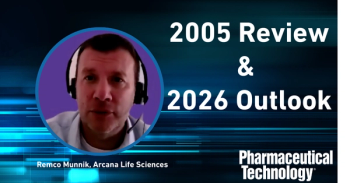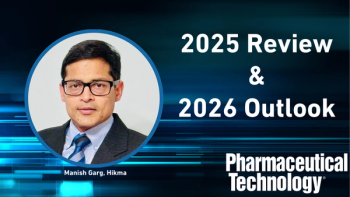
- Pharmaceutical Technology-04-02-2009
- Volume 33
- Issue 4
Parallel Tracks
Obama's cost-containment and science-innovation initiatives need to overlap.
Imagine that you're standing in a train station, and two trains are waiting to leave on adjacent tracks That's how I picture the Obama administration's policies that will affect the pharma industry going forward. One is the cost-containment track. The second is the science-innovation track, powered by the economic stimulus package. These tracks seem to be running parallel to each other with little hope of crossing down the line.
Michelle Hoffman
The cost-containment track has been built by legislative initiatives and key healthcare post nominations. First, there was the Mar. 2 nomination of Kathleen Sebelius for secretary of the Department of Health and Human Services, a move that President Obama described as advancing "Healthcare reform that reduces costs while expanding coverage," according to a White House press release.
Then there was the Mar. 14 nomination of Margaret Hamburg for Food and Drug Administration commissioner, along with the expectation that Joshua Sharfstein will be chosen as deputy director. Sharfstein was a former staffer for Rep. Henry Waxman (D-CA), the chairman of the House Energy and Commerce Committee who recently introduced a bill to establish a regulatory pathway for follow-on biologics. This move is a potentially significant cost-containment initiative in its own right and has received strong support from Obama.
Finally, the economic stimulus package passed in February includes $1.1 billion to "compare drugs, medical devices, surgery and other ways of treating specific conditions." Many see this as another measure for the government to contain drug costs. "Supporters of the research hope it will eventually save money by discouraging the use of costly, ineffective treatments," notes a Feb. 11 New York Times
The second, science-innovation track is tied to the stimulus package, which contained some $10 billion for the National Institutes of Health (NIH). With a prestimulus budget of more than $30 billion, NIH is now the largest supporter of basic biomedical research in the United States.
And when he signed the executive order reversing the ban on federal funding for embryonic stem-cell research, President Obama said, "Medical miracles do not happen simply by accident. They result from painstaking and costly research ... and from a government willing to support that work" (a full
The problem is while we're spending money to drive novel discoveries at the basic science level—discoveries that will form the foundation for novel medicines of the future—we're also limiting the money available to take those discoveries out of the laboratory and put them into the clinic. That money traditionally comes from profits earned by drug companies and is often plowed back into the commercial development of promising drug candidates.
A study published in 2007 in Managerial and Decision Economics found that, on average, it costs $1.2 billion to bring a promising biotechnology drug into market. Their research also indicates that approximately half of that money—about $615 million—is spent on preclinical development. Let's assume that most of that funding is covered by the innovation budget, largely through NIH support. Where is the additional $600 million or so supposed to come from? How is the drug to move through development and into the marketplace?
In years past, this money has come from a combination of private and public equity markets, along with partnerships from large pharmaceutical companies. In this economic environment, support from the equity markets is simply not forthcoming. So, what about the pharmaceutical companies? They, too, have reduced their appetite for risk, using cash to purchase better-established pipelines through large-scale mergers (think Pfizer's acquisition of Wyeth, and Merck's acquisition of Schering-Plough) rather than in-license less developed—but more innovative—drugs in progress. Limiting what these companies can charge for the drugs that do make it to market will only decrease their taste for investing in early-stage drugs.
As I said, each track on its own is justifiable and reasonable. But stimulating innovation on one track and containing costs on another can only serve to widen the distance between the two important initiatives. A truly coherent health and science policy has to find ways to bring these two tracks closer for the health and well-being of the economy, the pharmaceutical industry, and, oh, yes, people.
Michelle Hoffman is editor-in-chief of Pharmaceutical Technology. Send your thoughts and story ideas to
Articles in this issue
almost 17 years ago
Report from: Europealmost 17 years ago
In the Spotlight April 2009almost 17 years ago
Silicone Microdroplets in Protein Formulations—Detection and Enumerationalmost 17 years ago
Reference-Standard Material Qualificationalmost 17 years ago
Pharma Capsulesalmost 17 years ago
Ever Vigilant (A Pharmacovigilance Book Review)almost 17 years ago
Congress and Obama Seek to Bolster Drug Safetyalmost 17 years ago
Deep Freeze: Innovations in Lyophilizationalmost 17 years ago
Insider Solutions: Device Database Can Help Pharmaalmost 17 years ago
Tracking ExcipientsNewsletter
Get the essential updates shaping the future of pharma manufacturing and compliance—subscribe today to Pharmaceutical Technology and never miss a breakthrough.




